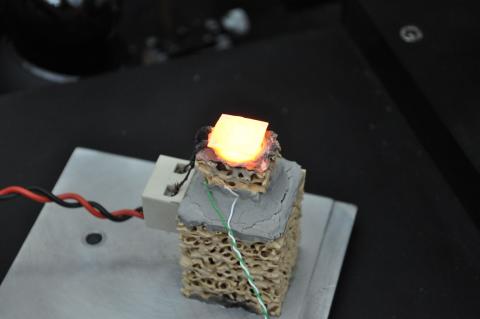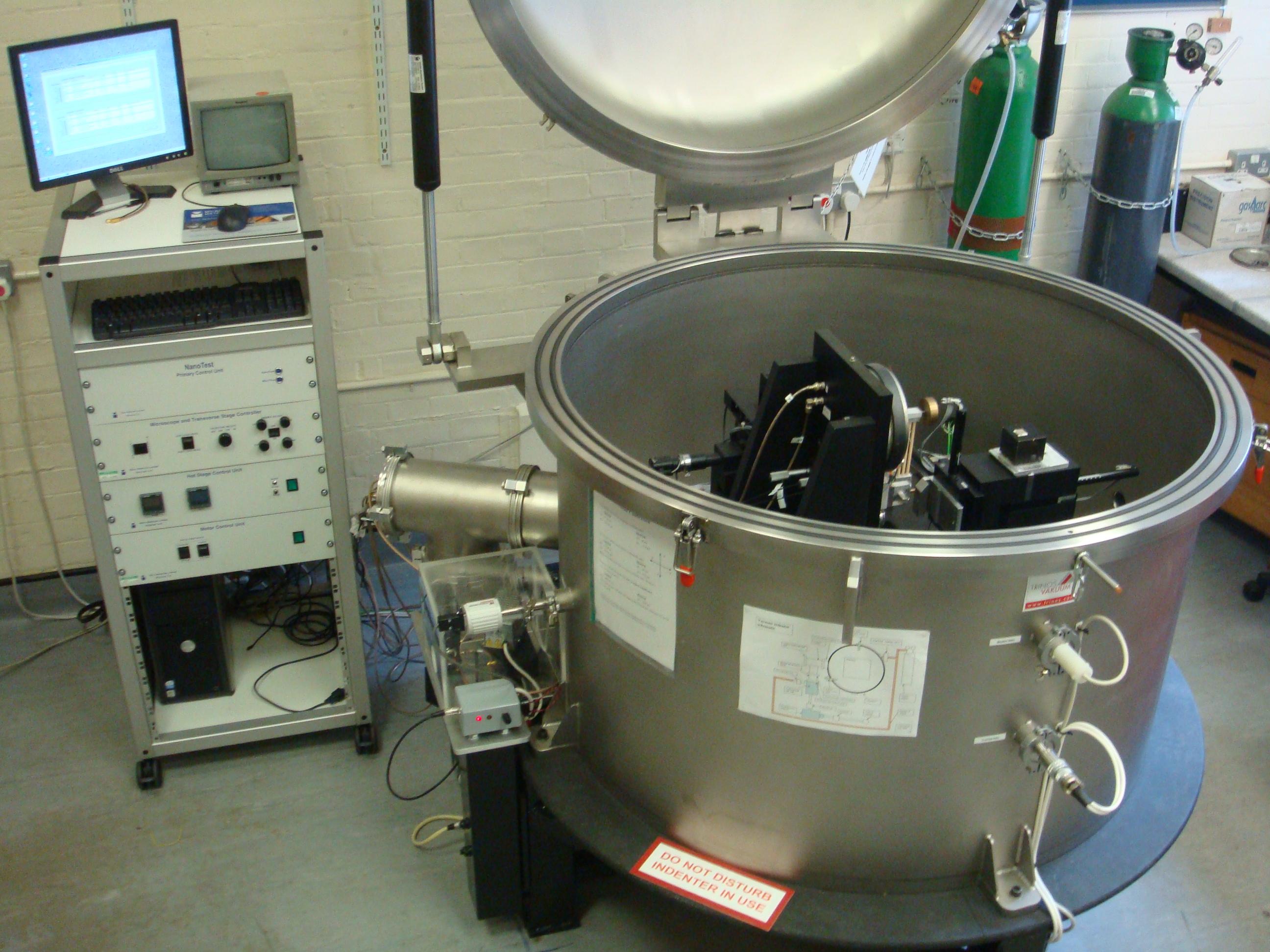Micro-mechanical characterisation studies are being carried out using facilities in the recently-established Cambridge Micromechanical Testing Centre (CAMTEC), which includes a unique resource in the form of 3 nanoindenters, with accessories which include hot and cold stages and a capability for operation under vacuum or in a controlled atmosphere environment. Recent and ongoing work covers the nanoindentation characteristics of shape memory alloys and the extraction of creep parameters from nanoindentation data. Other interests include measurement of the interfacial fracture energy of thick and thin surface coatings and study of the micromechanical behaviour of metal hydrides over a range of temperature. Collaborative work is ongoing with several organisations, including MicroMaterials Limited and AWE.
Micromaterials nanoindenter housed within a vacuum chamber
Recent work in the Gordon laboratory has been focussed on the development of procedures and modelling algorithms for extracting mechanical constitutive relations using indentation data. The relatively straight forward problem of extracting stress-strain curves from indentation load-displacement curves was published here and involved systematic comparisons between experimental and (finite element) model predictions, and iterative adjustment of material input parameters (yield stress and work hardening rates). In that study measured and predicted residual indent shapes were used, in conjunction with the load-displacment-time histories, to converge more robustly on a unique set of values. The importance of conducting tests in regimes were creep effects are negligible was also highlighted.
In fact, creep effects during indentation are important, and the nature of the stress field beneath an indenter (high deviatoric stresses) tend to encourage creep processes even at room temperature. Indentation data have previously been used therefore to calculate steady state creep stress exponents using analytical methods. However, a recent publication from the Gordon Laboratory has demonstrated that the commonly accepted method is invalid and inaccurate. A more reliable procedure has instead been developed (also in the Gordon Laboratory), that involves (once more) systematic comparisons between model predictions and experimental data. These new methods take account of, and include, the effects of primary creep on the indentation response.
Further work has been published on using indentation methods to measure residual stresses and current research projects are oriented towards the development of procedures and numerical algorithms for extracting constitutive equations from (thin) metallic coatings where the presence of the substrate effects the measured indentation response, and on extracting shape memory characteristics from indentation data.

Hot stage for high temperature indentation
The Micromechanical Testing Centre also houses a small scale tension/compression machine, a static (dead-weight) creep rig with high temperature capabilities, a four-point bending rig and an impulse excitation rig for measurement of Young's modulus.

